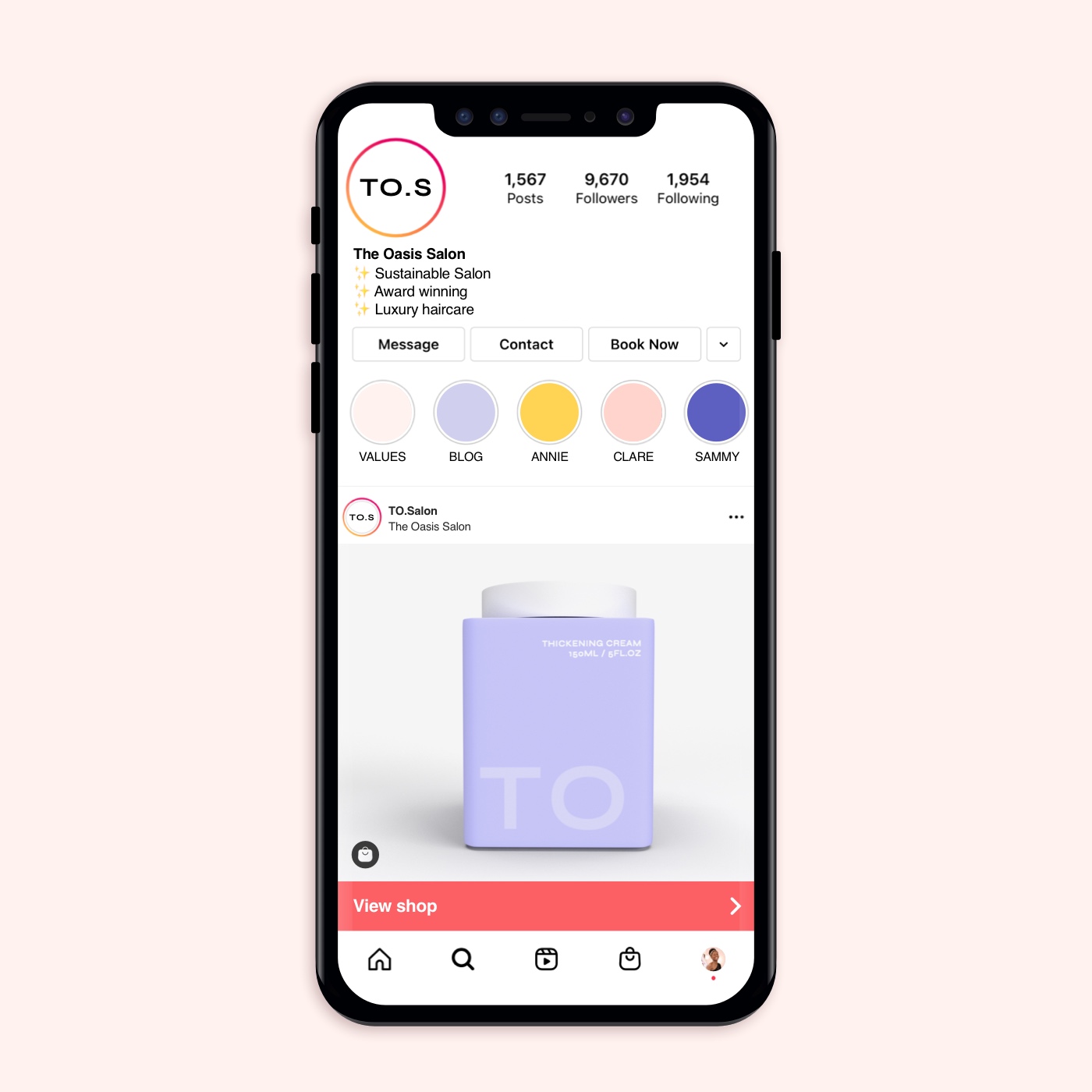Work smarter not harder: How salon owners are diversifying their income in 2022
Off the back of a challenging two years, we’ve seen a rise in salon owners future-proofing their businesses by adding an online store. Here’s how they’re doing it (and how you can too)
At the risk of stating the obvious, 2020 was tough and 2021 wasn’t much better. While businesses across the board were impacted by COVID-19, not to mention government-imposed restrictions and cautious clients, few industries were hit harder than beauty and hair.
Right now, the official line is that we need to learn to live with the virus. And while that’s fine and all, it hasn’t stopped savvy, forward-thinking business owners from diversifying their income streams to both recover past losses and help soften the blow of any future curveballs.
For many salon owners and sole traders, ecommerce is a natural extension of the in-salon experience. Your clients are going to need a stash of products to maintain salon-worthy results between treatments, so it makes sense to meet them where they are: at home.
Fortunately for the time-poor amongst us – i.e. everyone – setting up an online store has never been easier, thanks to our shiny new integration with Shopify.

Step 1. Getting started
Our newly-launched Timely-Shopify partnership allows salon and clinic owners to manage their online and in-store product sales with ease.
Usually, if something sounds like it’s too good to be true, it probably is – but this Timely-Shopify partnership is here to make your life easier. How does it work? In a few clicks, Timely integrates with Shopify to sync up to an existing store or create a new one, which then allows for easy stock and sales management across both systems. This means you can take advantage of all transactions tracking both online and in-salon to run sales reports through Timely, giving you a clear picture of top and low performing products.

Step 2. Making your first sale via Instagram
As we kick off 2022, social shopping – AKA shopping via social media apps, including Facebook, Instagram, Pinterest and Tiktok – is set to remain an ongoing ecommerce trend with customers preferring to purchase on-platform. Shopify integrates with Instagram and Facebook, meaning salons can sell directly to their followers. “We go out of our way to make sure that all of our posts are tagged through Shopify with products,” Kathryn Stevens, owner of Loxy’s salon says. “It makes it so easy for people – they don’t even have to leave Instagram to be shopping on your online store. It’s so, so easy to set up as well.”

Case study #1
Stephanie Farthing, founder of Karma Beauty, on how her genius idea to sell ‘at-home facials’ helped cover her rent during lockdown.
Creating an online store might sound intimidating at first; however, as Stephanie, founder of Karma Beauty explains, it doesn’t necessarily mean reinventing the wheel, but instead, tweaking your current offering. “When lockdown loosened a little bit, I spent quite a lot of time at the salon. I was looking at all the shelves and I thought, ‘All of these products are just sitting here.’” So instead of letting the products collect dust for six months, she created at-home facial kits for clients during a time when COVID-19 restrictions prevented them from coming into the salon.
“I included some of my most popular products in the kits, along with a handwritten guide about the facial and a sheet mask.” At the same time, Stephanie harnessed the power of social media by recording a tutorial for Instagram TV, which meant clients could follow along with her while they did their facial at home. All in all, it was a genius move – and it was one that paid off. “I sold a lot of facials – it covered my rent for two months – and it also encouraged my clients to buy more products.”

Case study #2
Daniela Costa, owner of Daniela Cost Brows & Beauty, on how Shopify’s automated emails have helped drive product sales.
Did you know that it is five times more expensive to find a new client than it is to retain an existing one? Once your online store is up and running, Shopify helps you to retain your clients using automated emails. This process is completely customisable – you can pick and choose the email formats that suit you. This could be as simple as an abandoned cart email, a request for a review, a prompt to repurchase, an invitation to come in-store – or, better yet, all of the above.
Daniela Costa, owner of Daniela Cost Brows & Beauty has seen huge success with the automated email prompt that pings clients who haven’t quite followed through with a purchase. “You can see who’s abandoned the checkout and then you can go in there and send them a message and say, ‘Oh, I’ve seen that you’ve got some items left in your cart – here’s a 10% off code.’”
Ultimately, evolving your business will help you stay afloat during uncertain times. We all have our limits and boosting your cash flow by working long hours is a one-way ticket to burnout. An online store, on the other hand, will generate income while you sleep.


